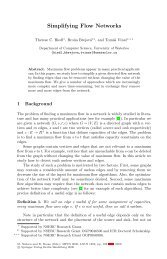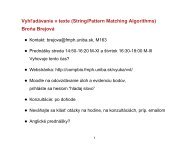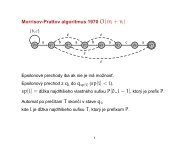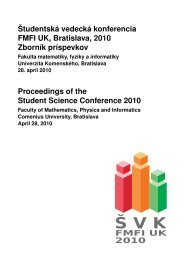1 The Junction Tree Algorithm (Hugin algorithm) Chapter 16(17 ...
1 The Junction Tree Algorithm (Hugin algorithm) Chapter 16(17 ...
1 The Junction Tree Algorithm (Hugin algorithm) Chapter 16(17 ...
You also want an ePaper? Increase the reach of your titles
YUMPU automatically turns print PDFs into web optimized ePapers that Google loves.
Different construction: Find all maximal cliques, create a graph with cliques as nodes and<br />
size of separator as a weight of an edge, find maximum weight spanning tree (Prim’s or Kruskal’s<br />
<strong>algorithm</strong>). This tree is a junction tree.<br />
Why? Consider variable Xk. If it is included in j maximal cliques, it will be in at most j − 1<br />
separators in any clique tree. In addition, this number will be j − 1 only if the cliques containing<br />
Xk form a connected subgraph of the tree. <strong>The</strong>refore the junction tree has the largest possible sum<br />
of separator sizes over all spanning trees.<br />
1.9 Computational complexity (s. <strong>16</strong>.13)<br />
• Moralization: O(N 2 ) + manipulation of tables<br />
• Introduction of evidence: O(N + M) + manipulation of tables<br />
• Triangulation: NP-hard to find optimal triangulation, but can be done heuristically in<br />
polytime + manipulation of tables<br />
• Construction of the junction tree: O(N 2 ) using maximum spanning tree, or O(N 3 )<br />
recursively.<br />
• Propagation of probabilities: O(N) messages passed, each needs table manipulation<br />
Size of a table is r k where r is the number of values per variable, k is the size of a clique. <strong>The</strong> main<br />
problem is to keep cliques small (in triangulation phase).<br />
9









